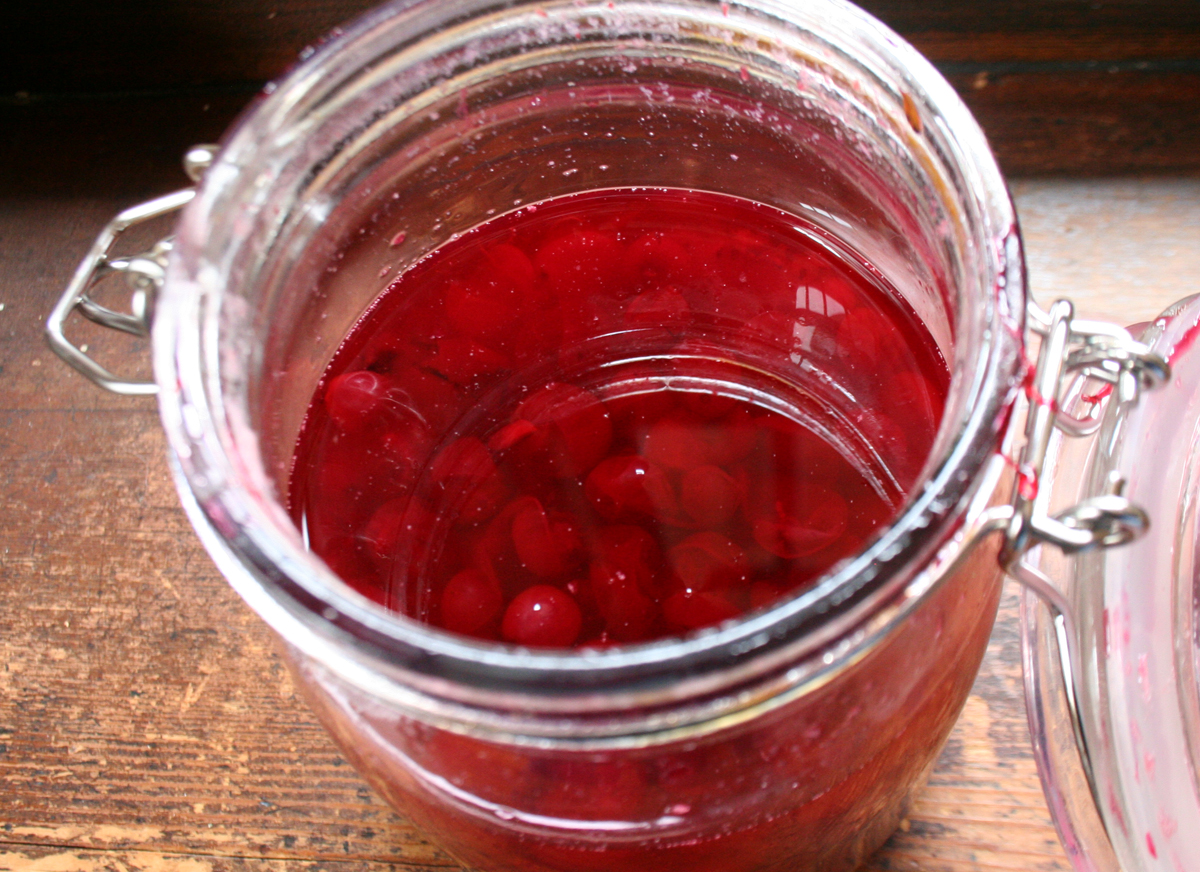Baja-style fish tacos have become increasingly popular over the last 10-15 years. The grilled fish wrapped in tortillas make a great summer dinner. When it's cold out and the hubby isn't too keen on getting outside to grill, we make a Southern version - Baja-Style Fried Catfish Tacos with slaw.
Making Beef Stock from bones
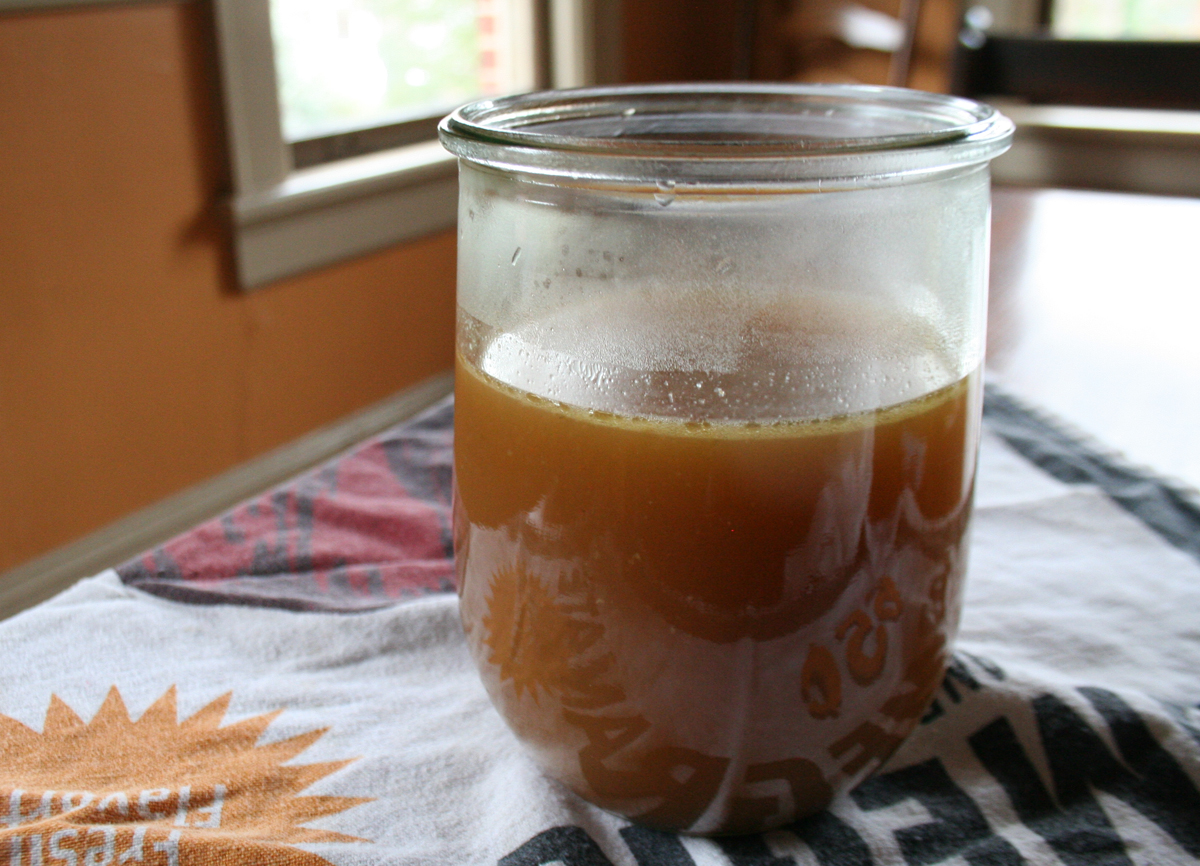
I recently bought a share of a beef cow with some friends. We split a half a steer between the five of us. My friend Casie had tracked down a farmer who could sell us meat that was organic, grass-fed and humanely-slaughtered. After dividing the share between five families, I took home a freezer full of meat. Given the option to pick whatever odd cuts of meat that we wanted, I asked for the large leg bones for soup and marrow and ended up with three 9-pound bags of assorted soup bones. I was the only one that wanted them, for some reason. What to do with this treasure? The only thing to do was to try making beef stock from bones at home.
Beef stock made from bones is so nutrient-rich and satisfying, that it has been used as medicine for centuries. Filled with bio-available protein, calcium, amino acids and niacin, there is a reason why doctors (and your mother) prescribe a bowl of broth when you are sick. When it is made at home, it is naturally low-sodium and low-calorie. The bones give the stock lots of collagen, which is essential to our bone and joint health. Because it is made from bones, it is relatively inexpensive (and frugal) to make. Making beef stock from bones is certainly easy and the result is a basic building-block for sauces, soups, rices and stews.
Making Beef Stock from bones
(makes 4 quarts)
You’ll need:
8 pounds beef soup bones, cut into 3-4 inch pieces
mirepoix – uniformly-chopped celery, carrots and onion
– 1 large onion
– 3 stalks of celery
– 3 carrots
2 bay leaves
4-6 cloves garlic, peeled
fresh thyme
fresh parsley
salt and pepper
12 quart stock pot
large fine sieve
large bowl
Optional: fresh rosemary, tomato paste, peppercorns

Starting with the bones
Which bones to use? Veal shank bones are the best, but they are very expensive. I asked for beef leg shank bones, but I got mixed bags of various soup bones. I was happy with the mix. You can use any bone from the steer that has a lot of marrow – knuckle bones, back bones, ox-tail bones, neck bones, etc. You want the bones to be cut into short lengths, so that the nutrient-rich marrow is exposed.
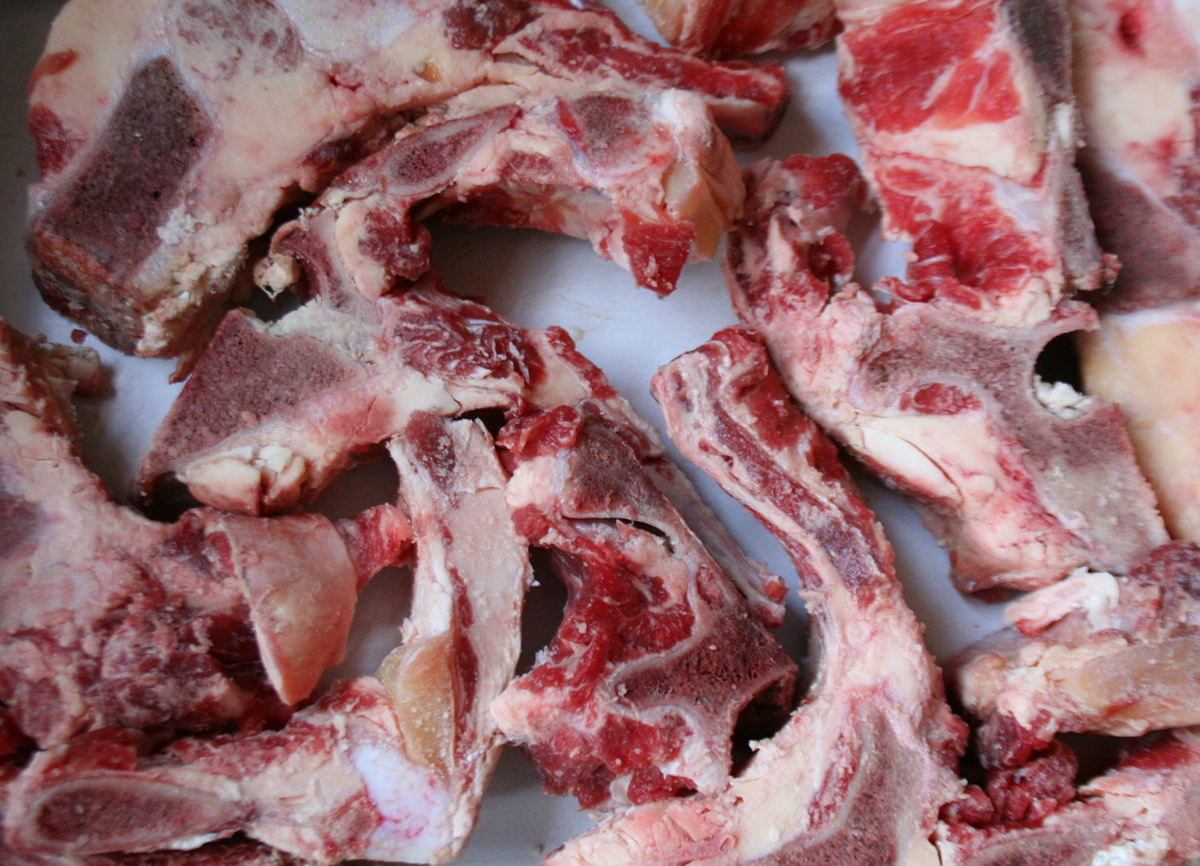
Making Beef Stock – the Classic Method
If you look at the classic French method of making beef stock from bones, it breaks down into pan-roasting the bones for a couple of hours, then simmering them for a long time in a large stock pot. Roasting the bones results in a richer and darker stock. The addition of roasted vegetables does the same.
Roasting the Beef Bones
Place the bones in a single layer in either two small or one large roasting pan. Add a sprinkling of salt on top of the meat. You don’t want to oversalt, because you will be cooking these down so much.

Place into a pre-heated 400 degree oven to roast. After they have roasted for an hour, remove from the oven. Your bones should be nicely brown. At this point, add the mirepoix – the diced onions, celery and carrots to the roasting pan of bones. Turn down the heat to 350 degrees and return the pan to the oven to roast for another 1/2 hour to roast the vegetables and finish roasting the bones.
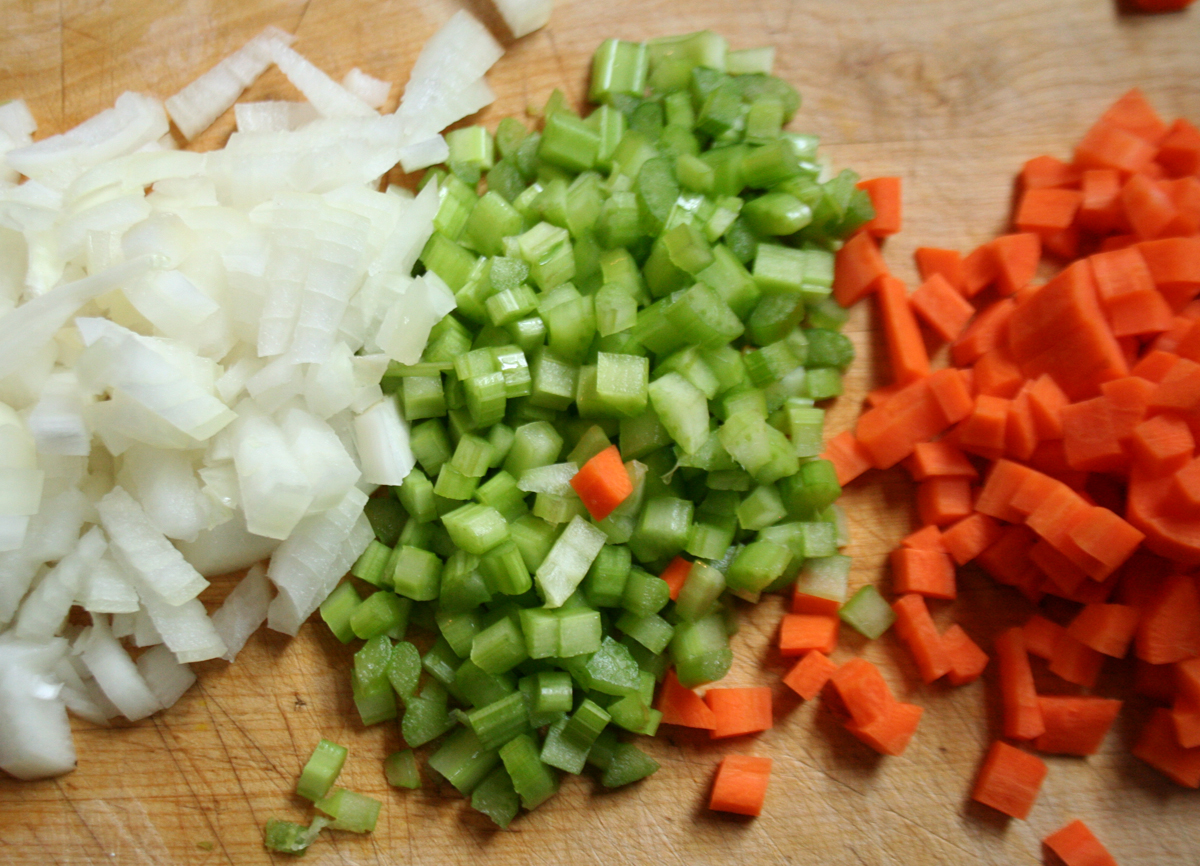
Simmering the stock
Place all your roasted bones and vegetables into a large stock pot. I used my big 12-quart stock pot. At this point, you should deglaze your roasting pans by placing them on a stove top flame, adding a little water, then scraping all the meaty bits from the bottom of the pan. Pour the water and roasted bits right into the stock pot with the bones. Add enough water to cover the bones, then add the bay leaves, garlic and peppercorns. If you want your stock to have a darker color, add tomato paste, too. Then sit back for a long simmer.
How long should the stock simmer? Escoffier said to simmer for twelve hours and Thomas Keller says five. I suppose that you could split the difference and simmer for eight. For this batch, I simmered for four hours, then put it into the refrigerator overnight for a bit of a break. The next morning, I pulled the cold stock out and peeled all the congealed fat from the top to discard. Then, back on the stove it went for another 8 hours of simmering. So, I simmered for 12 hours total.
While it is simmering, you should leave it on low heat and covered. Check occasionally to make sure there is enough water in the pot to cover the bones. Stir occasionally. If scum forms on the top, skim it of with a large spoon. You can also skim off the fat while it is cooking.
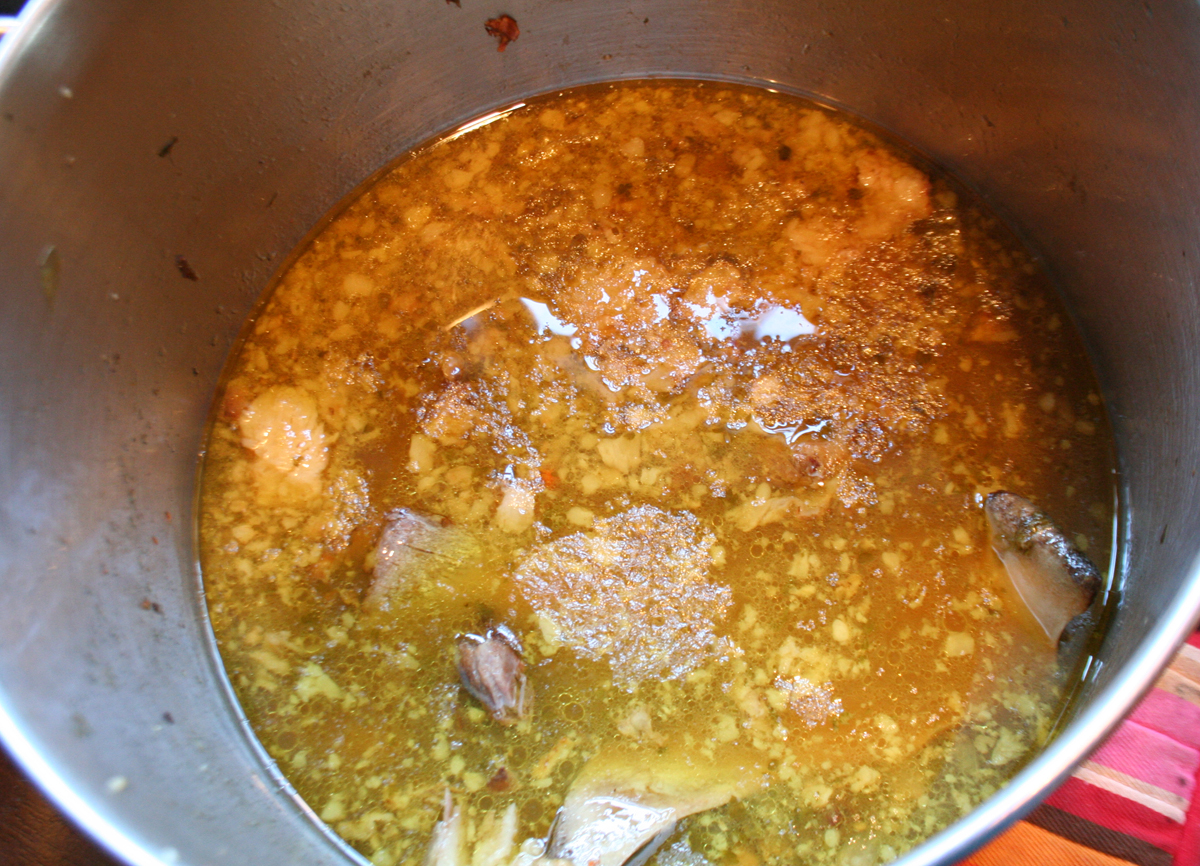
Once it was finished simmering, I let the pot cool on the stove for a half an hour. With a slotted spoon, I removed all the bones and most of the other solids to throw out. Then, with my son holding the sieve, I filtered the stock through it into a large bowl. The sieve removed the rest of the meat and vegetable solids that I wasn’t able to get with the spoon. I put the bowl of warm stock into the fridge.
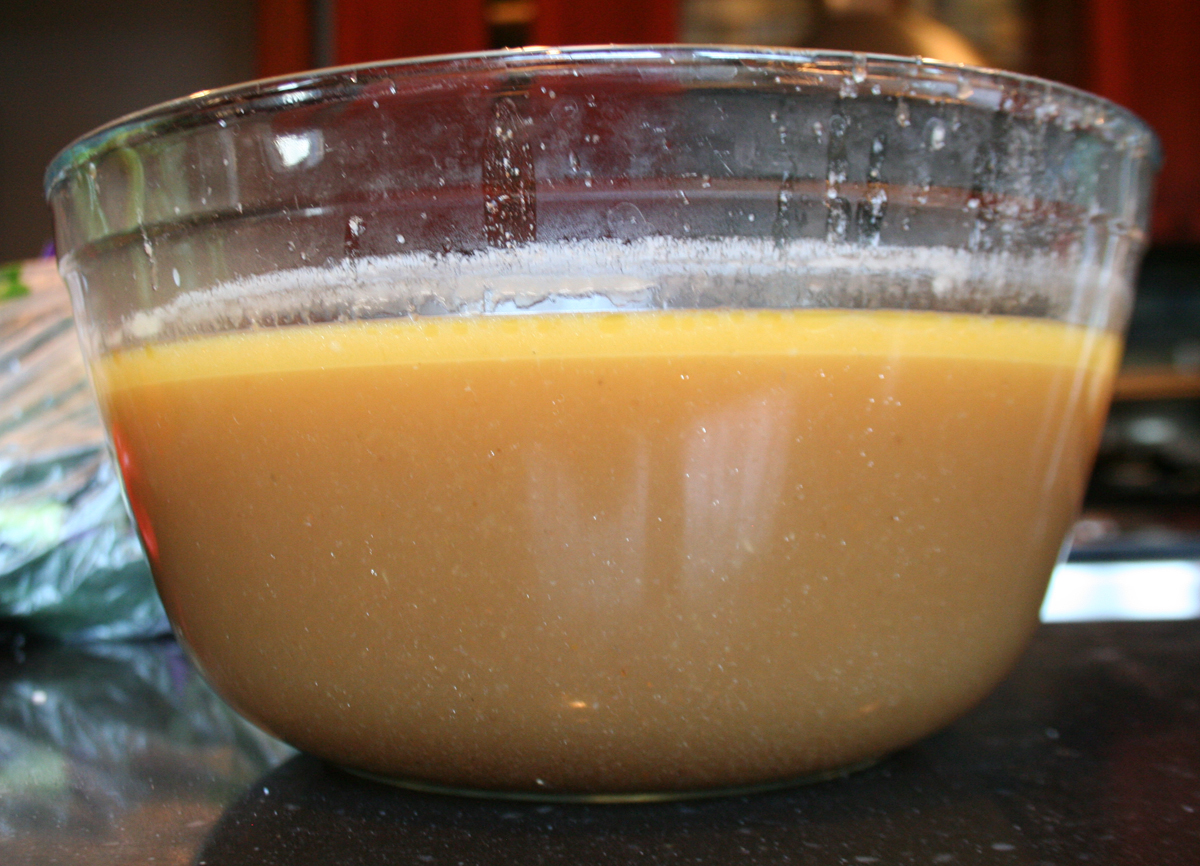
After a few hours in the fridge, the last remaining bit of fat had risen to the top of the bowl and hardened. I lifted the fat off and was now left with only the stock. It was still liquid enough to pour, so I poured it into quart freezer containers. Three quarts went right into the freezer and one quart was left in my fridge to use in the next week.

The stock will go into the fridge as liquid, but will cool to a natural gelatin. This is exactly what you want. You can now spoon it out into a sauce a bit at a time, or add to rice and grains as they cook. You can add to soups, stews and sauces. You can even heat a little in a cup as a daily dose of nutrients. Enjoy!
***

